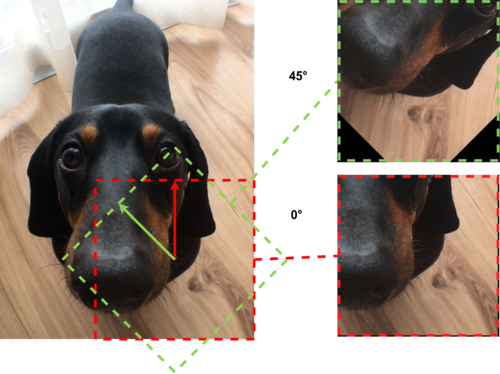GStreamer Pan Tilt Zoom and Rotate Element - Rotate
| GStreamer PTZR |
|---|
 |
| GstPTZR Basics |
| User Guide |
| Getting Started |
| Examples |
| Contact Us |
This page serves as a reference on how to adjust rotate values on GstPTZR.
Rotate Generalities
The rotate effect is achieved by rotating the input image pixels about the origin, so that the capture region seems to be rotating in the opposite direction. Even thought the rotation is performed about the origin of the input image, the translation factor is corrected to make it seen like the rotation is actually made about the center of the capture region. To perform rotations the following parameters are used:
- rotate-level
- The desired rotation about the depth axis with origin on the center of the capture region
- rotate-delta
- The desired rotation about the depth axis starting from the current capture region angle
The following sections describe in more detail each of the possible rotation configurations.
Rotate Level
rotate-level < 0
When the rotate level is set to a negative value, a clockwise rotation of the capture region is expected. This rotation will create the effect that the input image is rotating counter clockwise. The rotation will be performed about the depth axis with origin on the center of the current capture region. Figure 1 exemplifies this concept.

rotate-level > 0
When the rotate level is set to a positive value, a counter clockwise rotation of the capture region is expected. This rotation will create the effect that the input image is rotating clockwise. The rotation will be performed about the depth axis with origin on the center of the current capture region. Figure 2 exemplifies this concept.

Rotate Level
rotate-delta
The delta variation of rotate-level has the same behavior described before, except the final rotate is calculated as current rotate-level + rotate-delta.
Rotate Limits
There is not really a limit for the rotate-level and rotate-level, any positive or negative real number can be used. The only consideration to have is that, even thought the translation is limited to avoid showing black borders, they may appear when performing rotations near the border of the input image. This behavior is shown in figure 3.



